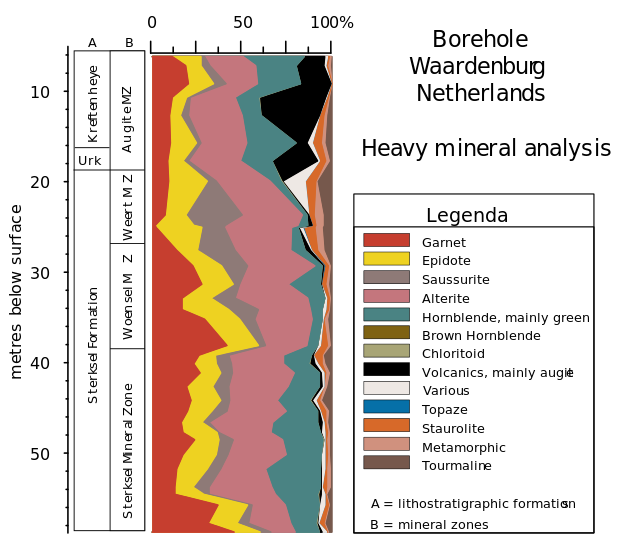Heavy mineral Separation
The separation of heavy minerals from the majority of light minerals is done by immersion in a heavy liquid with a specific density of 2.8g/ml.
Cleaning
Before starting the actual separation process, the samples need to be cleaned. Adhering clays or cement are removed in an ultrasound bath by adding a dispersant like sodium metaphosphate. Iron oxide coating can be removed by treatment of the sample with oxalic acid. This treatment should be used cautiously as it attackes apatites.
Sieving
In general heavy mineral analysis is applied on sand. In the past the entire sand fraction was often analysed, but later it became more common to carry out the heavy mineral analysis on specific size ranges. Widely used size ranges are:
- 63 – 125 mµ
- 100 – 200 mµ
- 125 – 250 mµ
The specific size ranges are obtained by sieving of the sand sample.
Separation
Using a heavy liquid with a specific density of 2.8g/ml, the “heavy” grains are separated from the “lighter” grains which mostly consist of quartz and feldspar. The separation is done in a separating funnel in a temperature controlled room of 20°C. The “heavy” grains will accumulate in the bottom of the funnel above the pinch clip and the “lighter” grains float to the surface. After 6 – 8 hours of separation the pinch clip is opened and the heavy minerals are drained onto a filter paper. The residue of heavy minerals is washed in distilled water and after drying permanent grain mounts are prepared in Canada balsam with a refractive index of 1.538.
Identification
Identification of heavy minerals occurs on the basis of optical properties under a polarized light microscope (PLM). The determination of the different heavy minerals are supported by photographs of each different type of heavy mineral. A total of 200 grains are counted and the percentages of the different identified minerals are plotted in a diagram.

